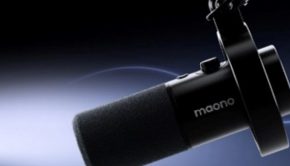AMD takes aim at exceptional content, comfort and compatibility with new LiquidVR technologies
AMD takes aim at exceptional content, comfort and compatibility with new LiquidVR™ technologies.
– Never Break Presence: New AMD Technology Platform Is Architected for Immersion and Responsiveness in Virtual Reality Environments –
San Francisco, Calif. – 3 March, 2015 – Today, at the Game Developer Conference in San Francisco, AMD (NASDAQ: AMD) announced an initiative to deliver the best possible VR experience for developers and users through new AMD technologies and partnerships. The first output of AMD’s initiative is LiquidVR™, a set of innovative technologies focused on enabling exceptional VR content development for AMD hardware, improved comfort in VR applications by facilitating performance, and plug-and-play compatibility with VR headsets. The upcoming LiquidVR SDK makes a number of technologies available which help address obstacles in content, comfort and compatibility that together take the industry a major step closer to true, life-like presence across all VR games, applications, and experiences.
In virtual reality, the concept of ‘presence’ is described as the perception of being physically present in a simulated, nonphysical world in a way that fully immerses the user. A key obstacle to achieving presence is addressing motion-to-photon latency, the time between when a user moves their head and when his or her eye sees an updated image reflecting that new position. Minimising motion-to-photon latency is critical to achieving both presence and comfort, two key elements of great VR.
Reducing latency involves the entire processing pipeline, from the GPU, to the application, to the display technology in the headset. AMD GPU software and hardware subsystems are a major part of improving that latency equation, and with LiquidVR™, AMD is helping to solve the challenge by bringing smooth, liquid-like motion and responsiveness to developers and content creators for life-like presence in VR environments powered by AMD hardware.
“Achieving presence in a virtual world continues to be one of the most important elements to delivering amazing VR,” said Brendan Iribe, CEO of Oculus. “We’re excited to have AMD working with us on their part of the latency equation, introducing support for new features like asynchronous timewarp and late latching, and compatibility improvements that ensure that Oculus’ users have a great experience on AMD hardware.”
“Content, comfort, and compatibility are the cornerstones of our focus on VR at AMD and we’re taking a big step in all three areas with the introduction of LiquidVR™ today. With LiquidVR we’re collaborating with the ecosystem to unlock solutions to some of the toughest challenges in VR and giving the keys to developers of VR content so that they can bring exceptional new experiences to life,” said Raja Koduri, corporate vice president, Visual Computing, AMD. “AMD will continue to collaborate closely with the VR ecosystem to deliver new LiquidVR technologies that aim to make the virtual world every bit as accurate as the real world.”
Significant features of version 1.0 of the LiquidVR SDK include:
• Async Shaders for smooth head-tracking enabling Hardware-Accelerated Time Warp, a technology that uses updated information on a user’s head position after a frame has been rendered and then warps the image to reflect the new viewpoint just before sending it to a VR headset, effectively minimising latency between when a user turns their head and what appears on screen.
• Affinity Multi-GPU for scalable rendering, a technology that allows multiple GPUs to work together to improve frame rates in VR applications by allowing them to assign work to run on specific GPUs. Each GPU renders the viewpoint from one eye, and then composites the outputs into a single stereo 3D image. With this technology, multi-GPU configurations become ideal for high performance VR rendering, delivering high frame rates for a smoother experience.
• Latest data latch for smooth head-tracking, a programming mechanism that helps get head tracking data from the head-mounted display to the GPU as quickly as possible by binding data as close to real-time as possible, practically eliminating any API overhead and removing latency.
• Direct-to-display for intuitively attaching VR headsets, to deliver a seamless plug-and-play virtual reality experience from an AMD Radeon™ graphics card to a connected VR headset, while enabling features such as booting directly to the display or using extended display features within Windows.
AMD released the alpha version of LiquidVR SDK 1.0 to registered developers today.







